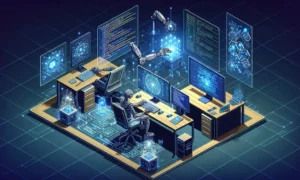There are many different programming languages out there. Knowing which one to start with is a common question for parents of children who are interested in coding or learning to code. It’s important to note that the decision can be based on the child’s goals and interests.
You should consider your child’s abilities and interests before making a decision. For example, do they prefer an interactive coding language that helps them visualize the code? Do they enjoy solving problems with math or logic puzzles? Or would they rather focus on building games? So which one should you choose? Read on to find out!
Choose the Best Apps for Learning Coding for Kids
When choosing the best coding software for kids, there are several things for a parent to consider. Most importantly are the child’s age, level of technological understanding, and adaptability to problem-solving. While the core concepts of coding can be gamified for children, advancement in programming languages involves a lot of trial-and-error, Googling problems, and logic.
It’s also said that coding requires mathematical knowledge, but this isn’t entirely true. Coding requires a mathematical mindset, in that programmers need to understand functions and algorithms depending on the language being used. However, most coding requires nothing more than an elementary arithmetic knowledge.
With that said, let’s compare the differences between Scratch and Python.
Scratch
Scratch is a free and simple programming language developed by Mitch Resnick and patented by the Massachusetts Institute of Technology’s Lifelong Kindergarten Group (MIT). Because of its simple and highly visual interface, it is one of the most popular block-based programming languages for children and novices.
Scratch, in addition to a programming environment, provides children with all of the tools they need to create animations, games, and interactive stories. Its vibrant colors, simple labeling, and endearing characters make it an excellent tool for enticing children to learn how to code.
Python
Python, like Java, is not a difficult programming language for beginners. Most other text-based programming languages lack the clarity and directness that make Python so enjoyable to use, and Python surpassed Ruby in popularity several years ago.
While Python is certainly considered more advanced than Scratch, there are methods of teaching it to children. BlockyPy, for example, is a block-based version of Python with a drag-and-drop interface similar to Scratch, to keep things simple and focus on what matters most. However, BlockPy hasn’t been gamified to the same extent as Scratch.
At intermediate to advanced levels, Python is an excellent tool for serious game, web, and app development, as well as a great starting point for learning other programming languages.
Difficulty Level of Python vs Scratch
Learning Python can be challenging. Scratch is a great place to start for those who have little or no programming experience. Scratch allows children to code by placing logic “blocks” on the canvas. Scratch’s application is therefore limited in contrast to the other two.
Spending at least four hours each week for a month can assist develop intuition, thinking, and the motivation to generate their own ideas.
When compared to Scratch, Python is a more sophisticated programming language. While both Scratch and Python are appropriate for beginners, Scratch is a block-based language that is better suited to younger pupils and those with less programming expertise.
Typing might be more difficult for young kids than reading since there is more potential for error and the coding syntax can be harder to comprehend at first. It is suggested that you have prior experience with Scratch if you wish to study Python and Javascript.
Applicable Uses of Scratch and Python
The Scratch coding language is not a “professional” programming language. It was designed for kids. It has no practical purpose in the world other than giving kids early exposure to computer science.
All of the blocks, which could be considered functions in their own right, are pre-programmed for the student. So even though kids can create some really cool stuff and it is a fun challenge, practically speaking Scratch will not prepare you for a career of any kind.
Python, on the other hand, has more sophisticated and practically unlimited project potential. And since it’s used at the collegiate and professional level, the sky’s the limit to what kids can learn.
Perhaps your child loves video games or is intrigued by the recent developments in artificial intelligence technology. From coding arcade games to progressing to a more advanced Python course with complex algorithms, machine learning, and cryptography, the language is rich in subject matter just waiting to be explored.
Final Words
When comparing Scratch and Python side-by-side, it’s apparent that Scratch is intended for younger children, particularly ScratchJr for ages 5 – 7. Python on the other hand is a real-world programming language with all kinds of applications mundane and complex.
If you have a very young child, ScratchJr will be the best starting point, but Scratch can serve as a useful introduction to coding even for older children. Once they’ve learned some of the core programming concepts with Scratch, learning Python will be easier for them, as well as other programming languages – which really is the point of Scratch, afterall.



































